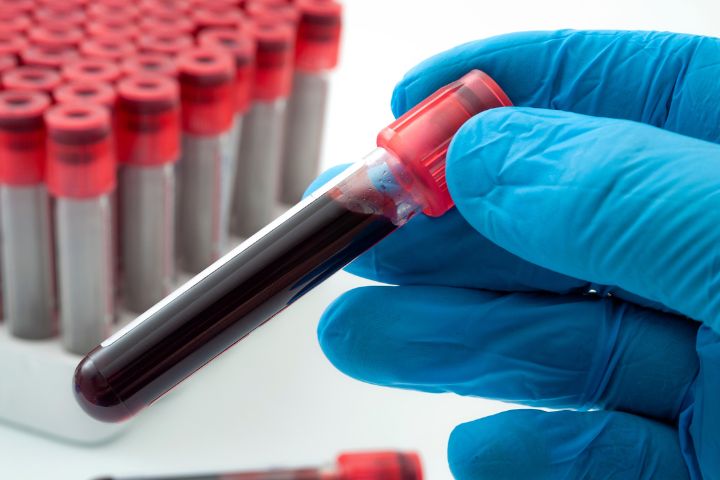What Does Northeast Medical Institute - New Haven Campus Phlebotomy Course & Cna Class Mean?
What Does Northeast Medical Institute - New Haven Campus Phlebotomy Course & Cna Class Mean?
Blog Article
The Northeast Medical Institute - New Haven Campus Phlebotomy Course & Cna Class Diaries
Table of ContentsThe Best Guide To Northeast Medical Institute - New Haven Campus Phlebotomy Course & Cna ClassAbout Northeast Medical Institute - New Haven Campus Phlebotomy Course & Cna ClassThe Basic Principles Of Northeast Medical Institute - New Haven Campus Phlebotomy Course & Cna Class All About Northeast Medical Institute - New Haven Campus Phlebotomy Course & Cna ClassAll About Northeast Medical Institute - New Haven Campus Phlebotomy Course & Cna ClassIndicators on Northeast Medical Institute - New Haven Campus Phlebotomy Course & Cna Class You Need To Know
Nonetheless, the usage of such tools need to be accompanied by various other infection avoidance and control methods, and training in their use. Not all safety and security gadgets are applicable to phlebotomy. Before selecting a safety-engineered gadget, individuals should completely explore readily available tools to determine their appropriate usage, compatibility with existing phlebotomy techniques, and effectiveness in safeguarding team and individuals (12, 33).For settings with low sources, expense is a driving factor in purchase of safety-engineered tools - CNA Classes. Where safety-engineered devices are not offered, proficient usage of a needle and syringe serves. Unintended direct exposure and details info concerning an incident should be videotaped in a register. Support services ought to be advertised for those that undertake unintended direct exposure.
One of the necessary pens of top quality of treatment in phlebotomy is the involvement and participation of the client; this is equally valuable to both the health employee and the individual. Clear details either created or verbal should be offered to each client that undertakes phlebotomy. Annex F supplies sample text for discussing the blood-sampling treatment to a client. labelling); transportation problems; analysis of results for medical administration. In an outpatient division or facility, provide a devoted phlebotomy workstation containing: a clean surface area with 2 chairs (one for the phlebotomist and the various other for the person); a hand clean basin with soap, running water and paper towels; alcohol hand rub. In the blood-sampling room for an outpatient division or center, give a comfy reclining couch with an arm remainder.
Some Known Facts About Northeast Medical Institute - New Haven Campus Phlebotomy Course & Cna Class.
Ensure that the indicators for blood sampling are plainly defined, either in a created method or in documented instructions (e.g. in a research laboratory kind). Accumulate all the equipment needed for the procedure and location it within secure and easy reach on a tray or trolley, making certain that all the items are clearly visible.
Introduce on your own to the patient, and ask the patient to state their full name. Inspect that the research laboratory kind matches the person's identification (i.e. match the client's information with the lab form, to ensure precise recognition).
Make the client comfy in a supine position (if feasible). The client has a right to reject a test at any type of time before the blood tasting, so it is important to make sure that the client browse around this site has recognized the procedure - PCT Classes.
The Main Principles Of Northeast Medical Institute - New Haven Campus Phlebotomy Course & Cna Class
Extend the individual's arm and evaluate the antecubital fossa or lower arm. Locate a capillary of an excellent dimension that shows up, straight and clear. The diagram in Area 2.3, shows usual settings of the vessels, yet many variations are possible. The average cubital blood vessel exists between muscular tissues and is normally the most very easy to penetrate.
DO NOT insert the needle where veins are diverting, because this increases the opportunity of a haematoma. Situating the blood vessel will certainly assist in figuring out the right dimension of needle.
Samplings from main lines carry a risk of contamination or wrong lab test results. It is appropriate, but not optimal, to attract blood specimens when first introducing an in-dwelling venous tool, prior to connecting the cannula to the intravenous liquids.
Northeast Medical Institute - New Haven Campus Phlebotomy Course & Cna Class Things To Know Before You Buy
Failing to enable sufficient get in touch with time enhances the threat of contamination. DO NOT touch the cleansed website; in specific, DO NOT position a finger over the vein to assist the shaft of the revealed needle.
Ask the patient to form a hand so the veins are much more prominent. Get in the blood vessel swiftly at a 30 degree angle or much less, and proceed to introduce the needle along the capillary at the simplest angle of entry - CNA Courses. When adequate blood has actually been gathered, launch the tourniquet BEFORE withdrawing the needle
The Facts About Northeast Medical Institute - New Haven Campus Phlebotomy Course & Cna Class Revealed
Withdraw the needle carefully and apply mild stress to the site with a tidy gauze or dry cotton-wool round. Ask the person to hold the gauze or cotton woollen in area, with the arm extended and increased. Ask the patient NOT to flex the arm, because doing so causes a haematoma.

Fascination About Northeast Medical Institute - New Haven Campus Phlebotomy Course & Cna Class
Where possible, keep the tubes in a rack and move the rack towards you - https://pubhtml5.com/homepage/qvakm/. If the example tube does not have a rubber stopper, inject extremely slowly right into the tube as lessening the stress and velocity made use of to move the specimen decreases the danger of haemolysis.

Report this page